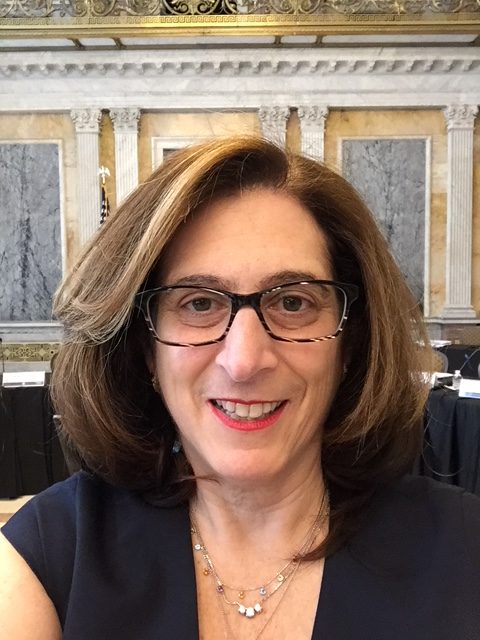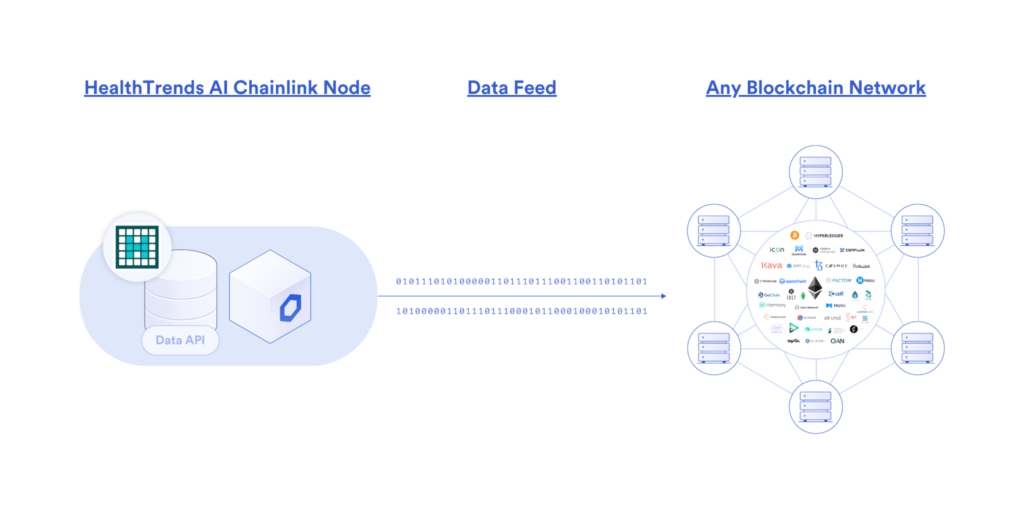
Susan Joseph is the CEO and co-founder of HealthTrends.ai, a trusted third party delivering ongoing authoritative health data that’s independently auditable and has legal weight. In this podcast we discuss the challenges the US Health Sector has regarding collection and distribution of health data and what role Smart COVID data on the blockchain can have to help fight the pandemic.
Susan is both a consultant and attorney with startups and enterprises in a variety of settings, including financial services, data usage, ESG, and digital assets. She is also a consortium advisor to the Mining and Metals Industry Blockchain Initiative and is the Executive Director of Diversity in Blockchain, a 501(c)(3) entity that provides education and resources to support diversity and inclusion in the blockchain space.
What is blockchain?
Susan views blockchain as a communications network layer on top of the internet that allows direct peer to peer transactions. To accomplish this, it requires cryptography, incentives such as game theory, other economic incentives, and computing power. It can be applied to a wide range of transactions from anything such as currencies to data usage which is where HealthTrends.ai jumps in.
In our previous podcast together entitled “Innovation & diversity in the Insurance Industry”, Susan had a more technical definition of what is blockchain. Now she views blockchain more as a social, political, economic and computing tool.
Challenges the US Health Sector has regarding collection and distribution of health data
The quality of public health data that is available to collect and act upon is the first defence at the beginning of a pandemic. The current pandemic has demonstrated that the manner in which the US captures public high quality health data, with which to make hard decisions, has been a stress test on every aspect of its healthcare system. That type of data, whilst published, is not easy to access, sort and aggregate thus making it really hard to make decisions in a timely manner in its current published form.
In the US, every state is charged with issuing out public health information and publishing it. But they’re not told how to publish it and in what form to make it available. They just put it up on their website in an unstructured manner. This creates challenges on downloading active data in a timely fashion.
Every state has in a sense, their own standard to the data, making it difficult to have a uniform dashboard where data is easily aggregated or sortable.
The data that the states are publishing has legal weight. It is important to recognise that the state themselves have not been recipient of a lot of infrastructure funds and they do the best they can with what they have. Susan wants to give special recognition to the “data nerds” and public health officials for collating and getting health data every day since the beginning of the pandemic.
She sees HealthTrends.ai as upgrading the data layer by empowering organisations to access the data to make the necessary decisions.
About HealthTrends.ai
Susan, is the CEO of HealthTrends.ai a company she co-founded at the beginning of the pandemic. They are a trusted third party, delivering ongoing authoritative health data that’s independently auditable and has legal weight. They’re the trusted data source that spans legacy and cutting-edge technology solutions, allowing innovative organisations to access both.
Their mission is to help any organisation turn health data into something actionable that they can use and base their decisions upon. The first tool they developed is the Coronavirus API that runs Coronavirus statistics. It is a free tool to support first responders who specifically use the data to confirm trends, assess risk for non-compliance, and create predictions to help manage their populations. Similarly, this type of data is used in insurance, economic projections, supply chain logistics, health equity and academics.
The role blockchain and smart contracts play
Susan views HealthTrends.ai as a bridge, since they use both legacy and blockchain parts in their solution. They currently hash the data onto the Ethereum public blockchain via smart contract which allows them to detect any changes to data published onto the blockchain.
They presently use Ethereum but Susan stresses that they are blockchain agnostic and could publish the data to any public or private blockchain. They’re now building a Chainlink node to afford certain data access within the smart contract environment.
Data standardisation challenges
As previously mentioned each state publishes the data in their own manner which in turn creates data standardisation challenges.
The states are collecting medical records from a variety of sources which could be electronically generated, could be phoned in, and or faxed in. This creates data nightmare scenarios for the people who are collecting and parsing it back out.
HealthTrends.ai takes the available published data and puts it up on the Ethereum public blockchain in a standard form.
Launching a Chainlink node
HealthTrends.ai is in the process of launching a Chainlink node. By launching their own official Chainlink oracle node, HealthTrends.ai will be able to broadcast state certified, authoritative COVID-19 data from their Coronavirus API onto many of the leading blockchain platforms like Ethereum, empowering a wide range of new smart contract applications to emerge for Life, P&C, and Health insurance, automatic rebalancing of supply chains, asset management and financial risk tools, and more.
They chose Chainlink because they’re the most widely used oracle solution in the market.
Plans for 2021
Susan shared some of the exciting projects they have in the works from an accelerator, a test environment, some AI and ML work, working on search tools and they’re constantly refining their smart contracts.
They’re expecting to expand their node to a solution that involves zero knowledge proof (ZKP).
Recognising the growth in parametric insurance, Susan is keen to explore if there’s a low level parametric insurance that could happen in a pandemic. For example, if there are deaths at a certain level or shutdown orders at a certain level that could trigger business interruption insurance at a certain level. In a smart contract market you could test this hypothesis.







